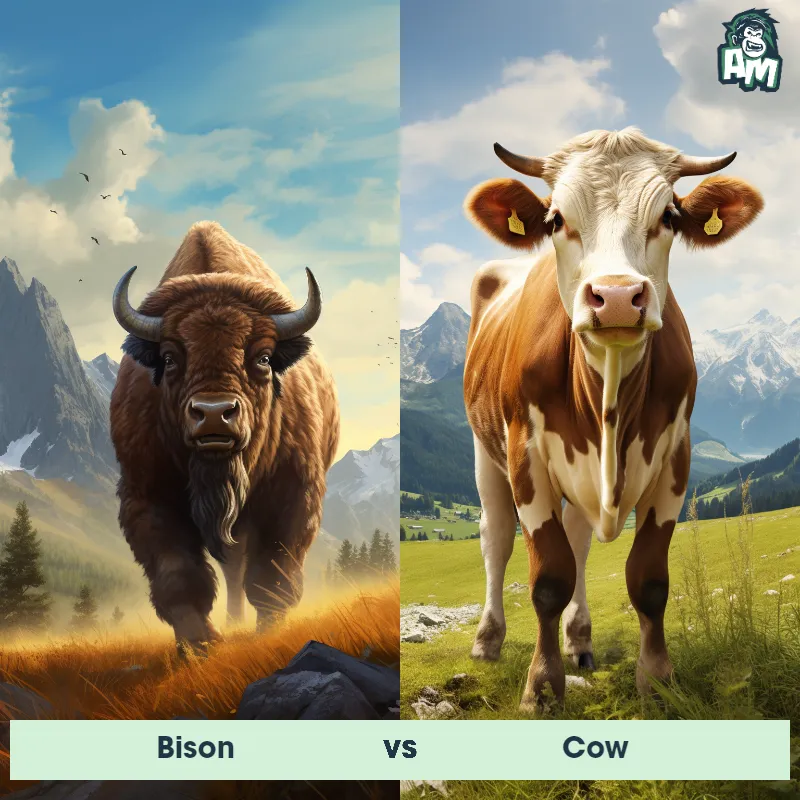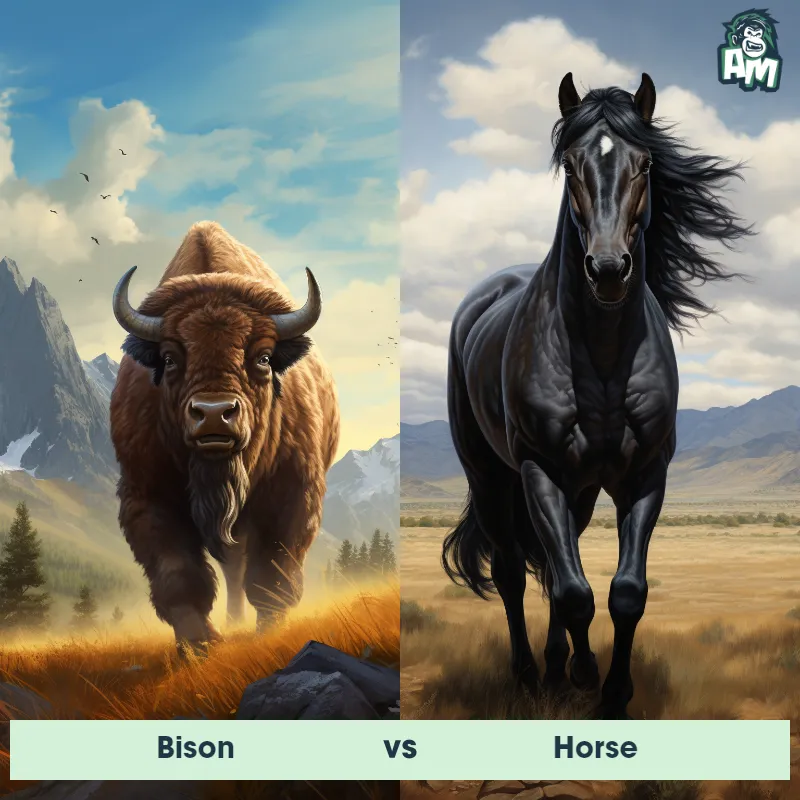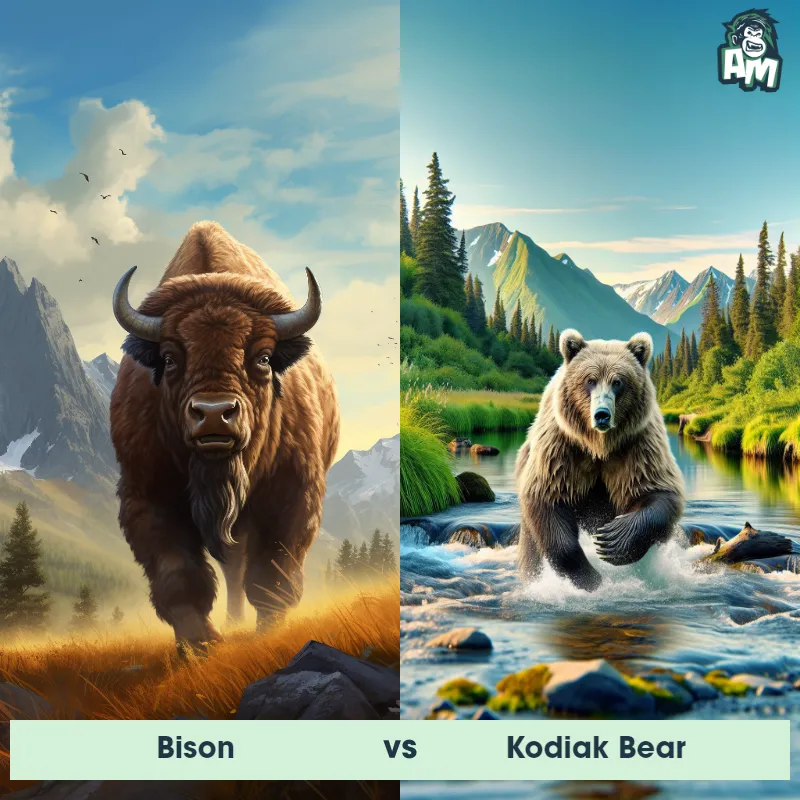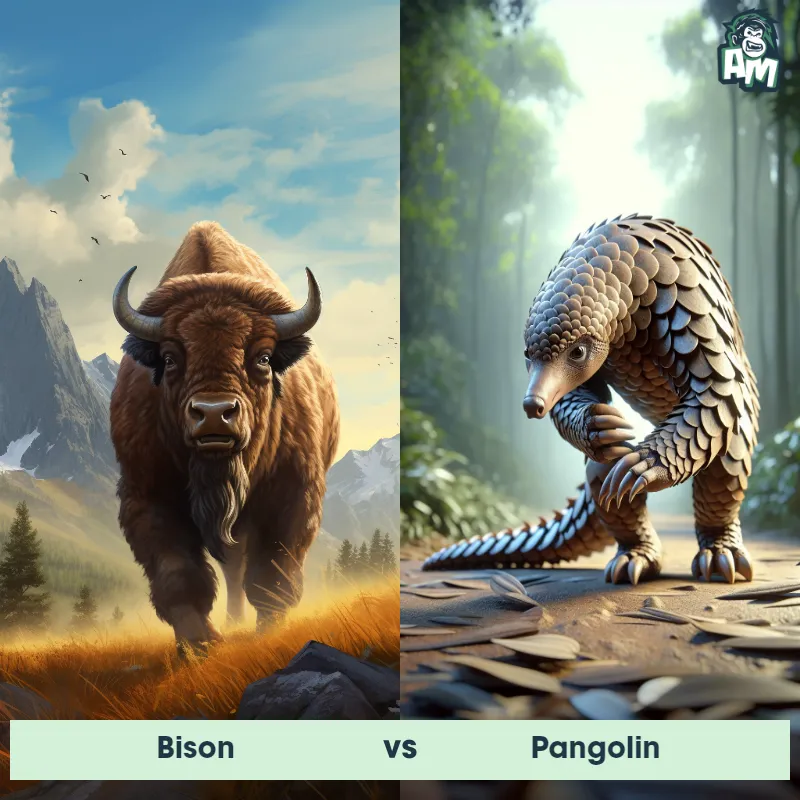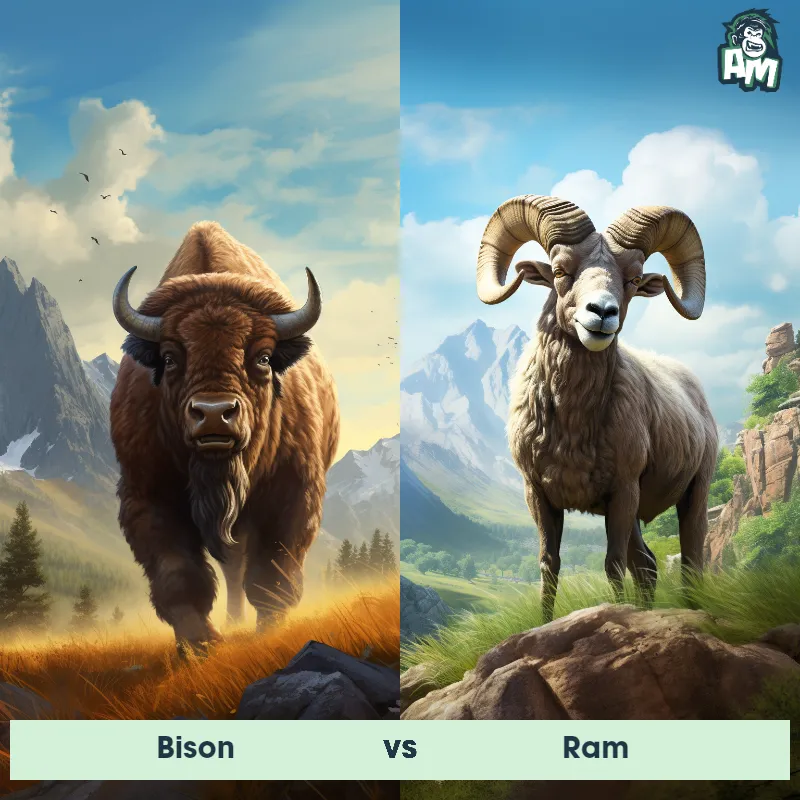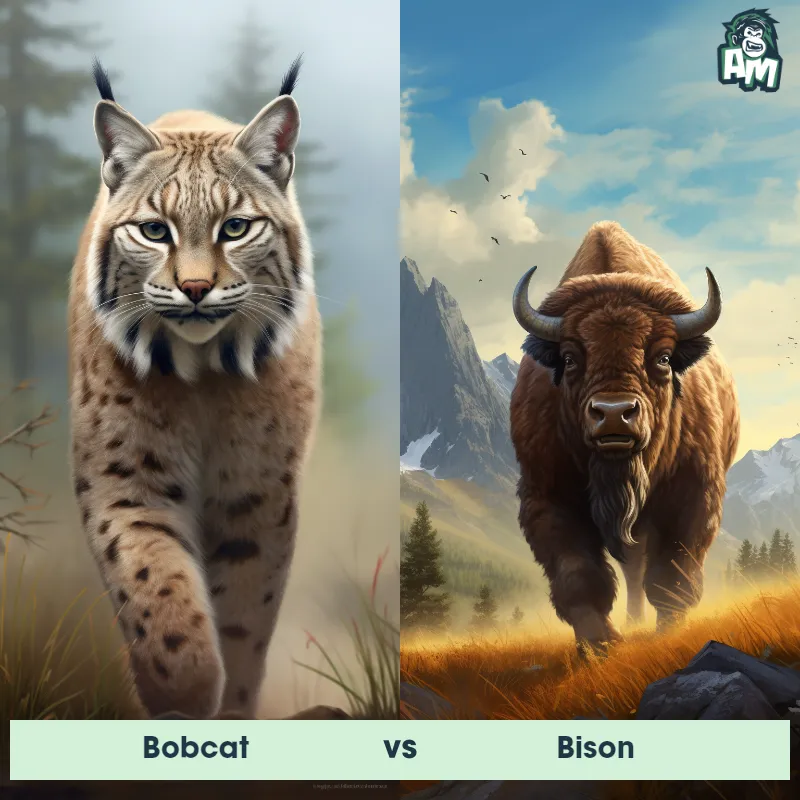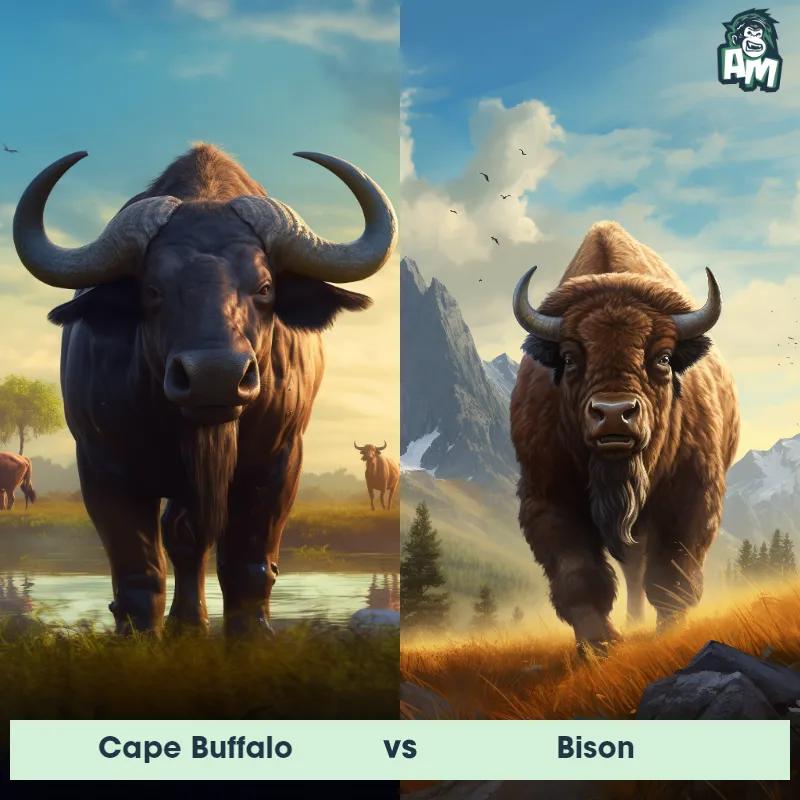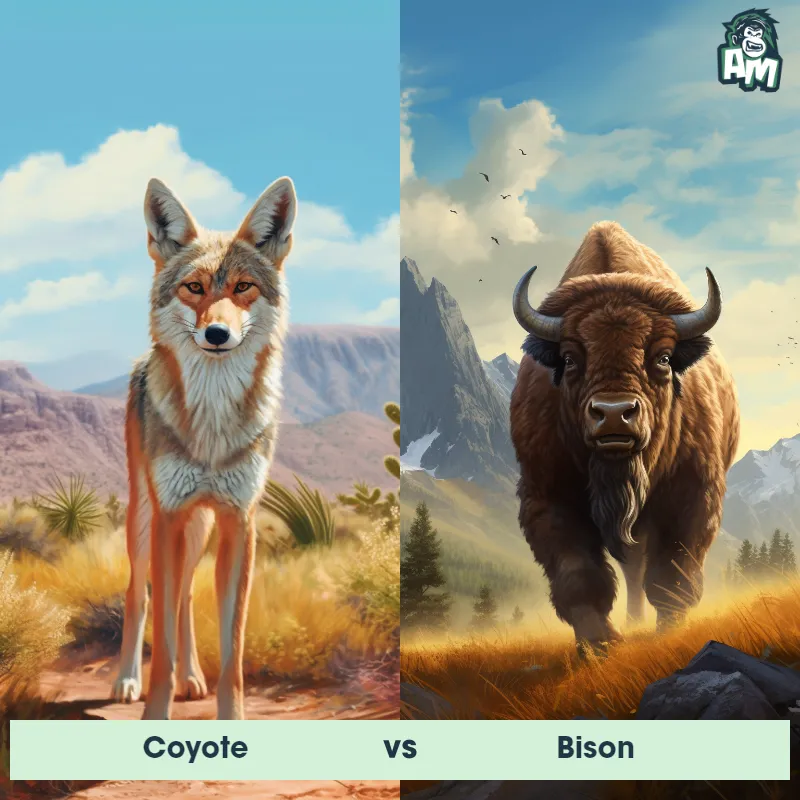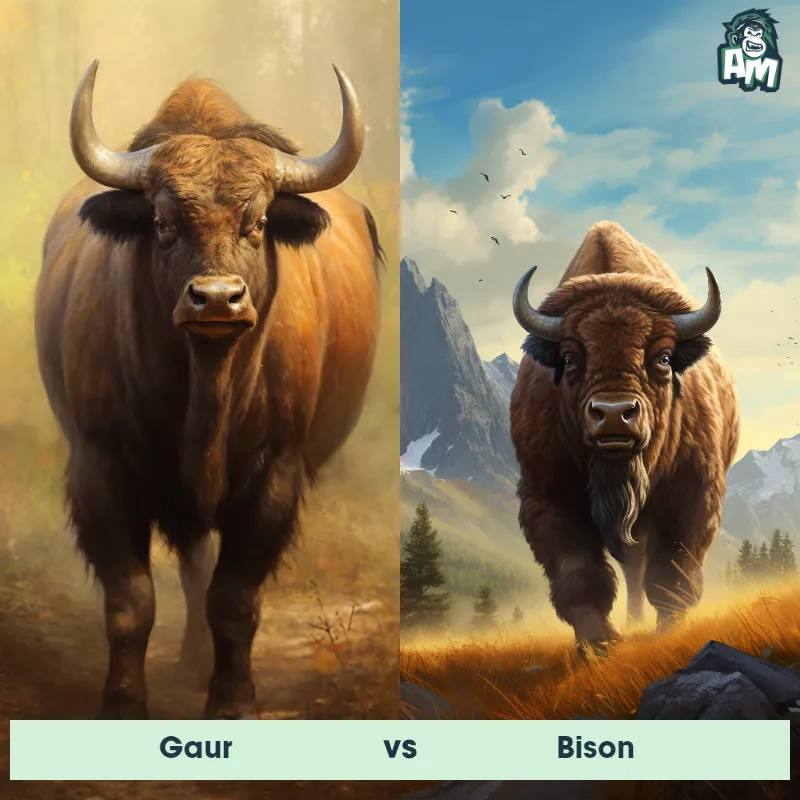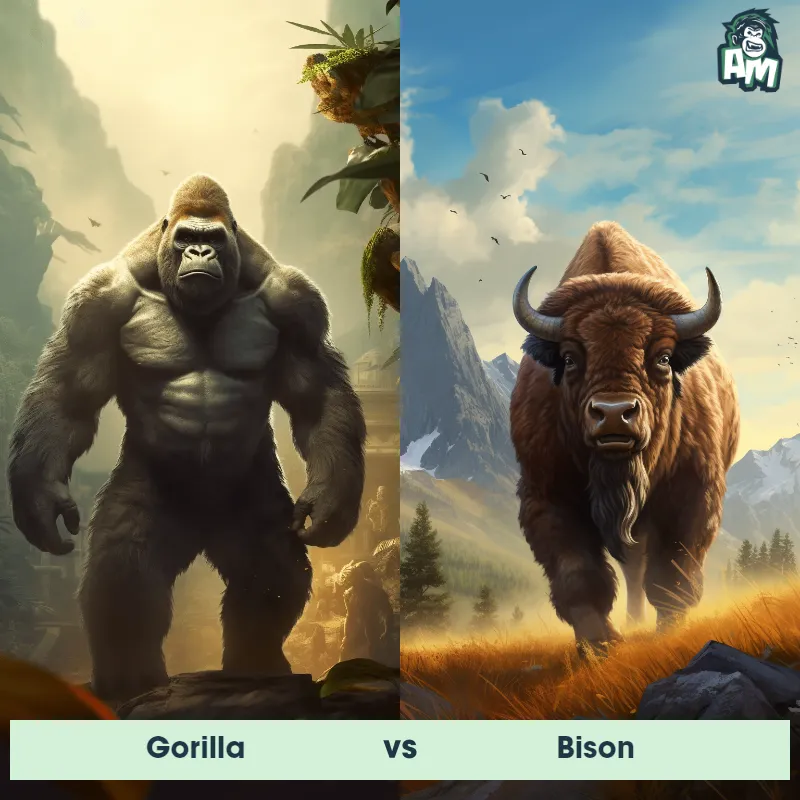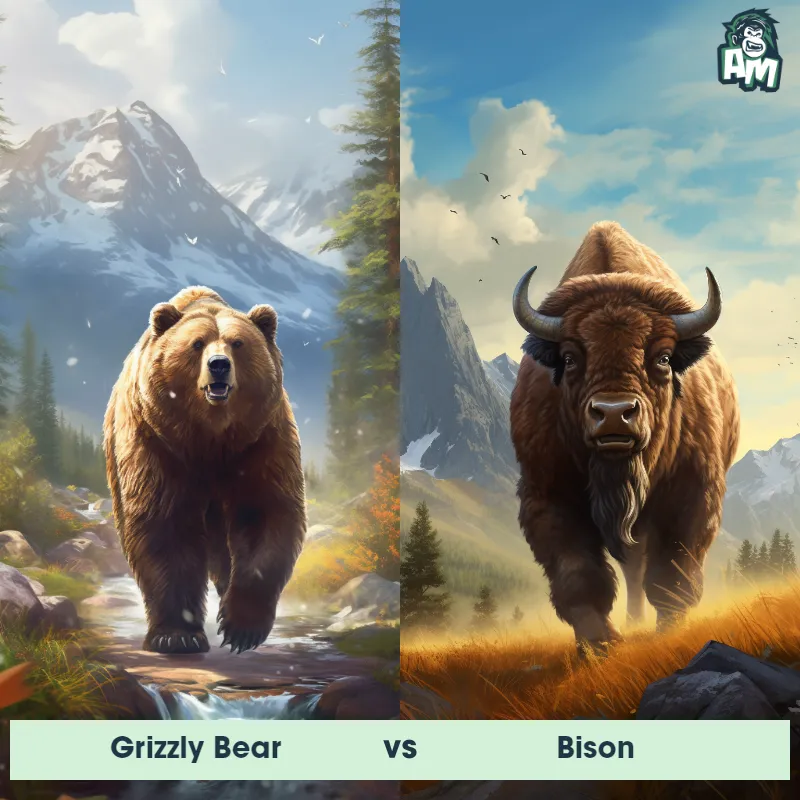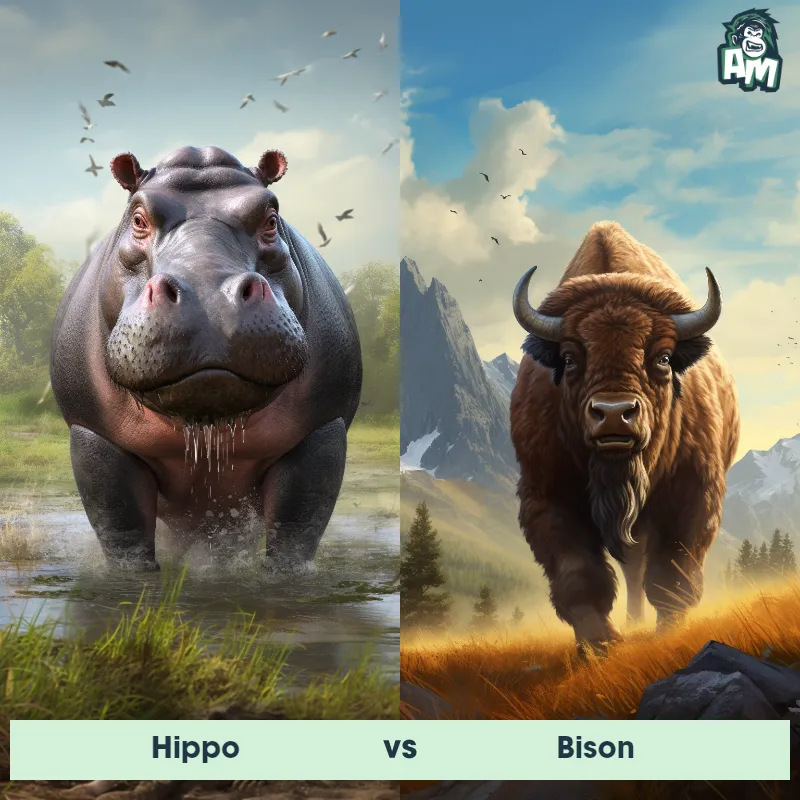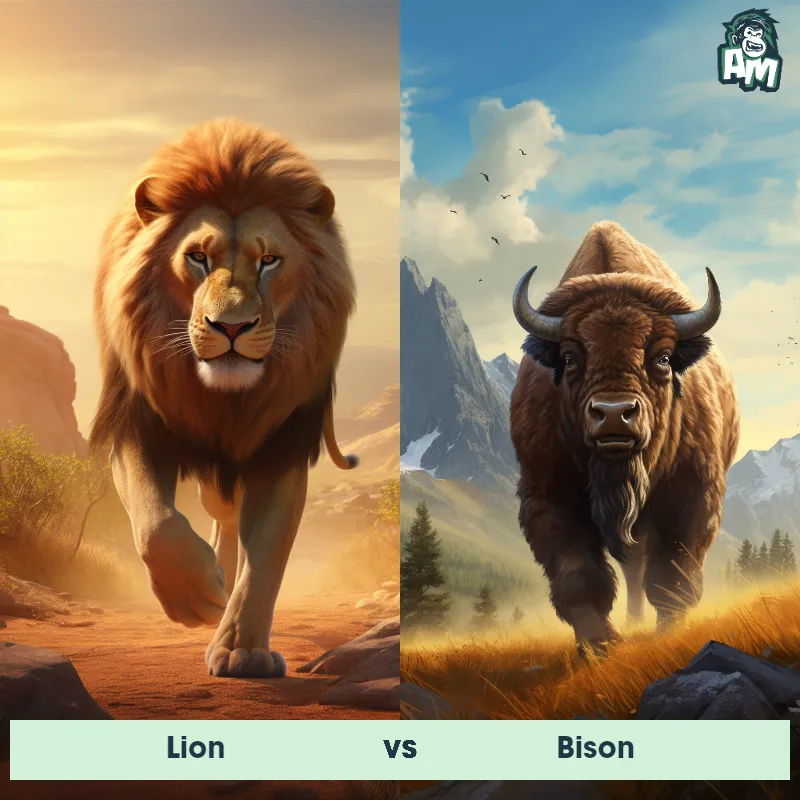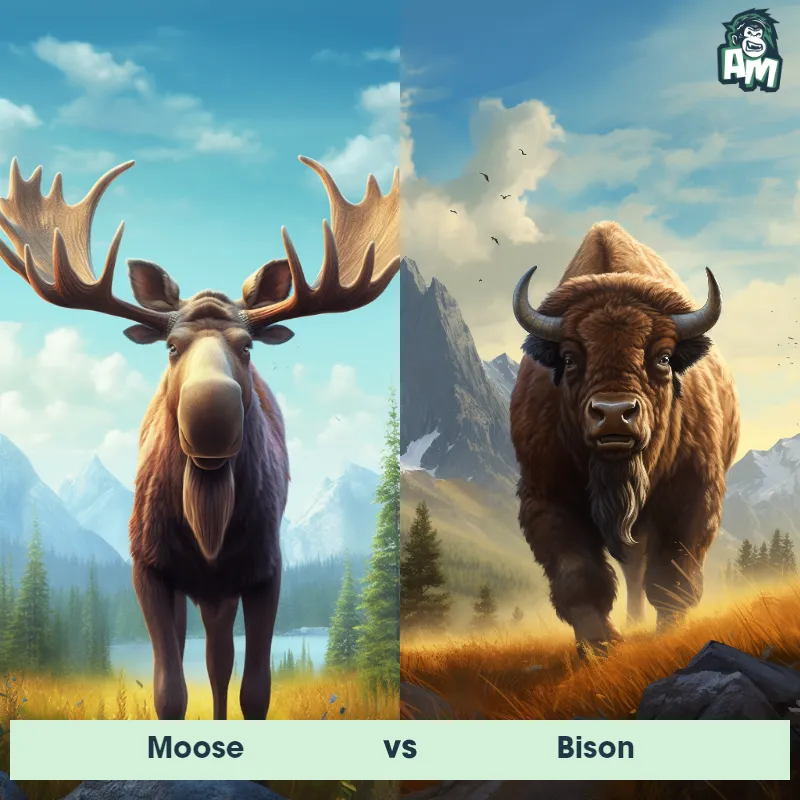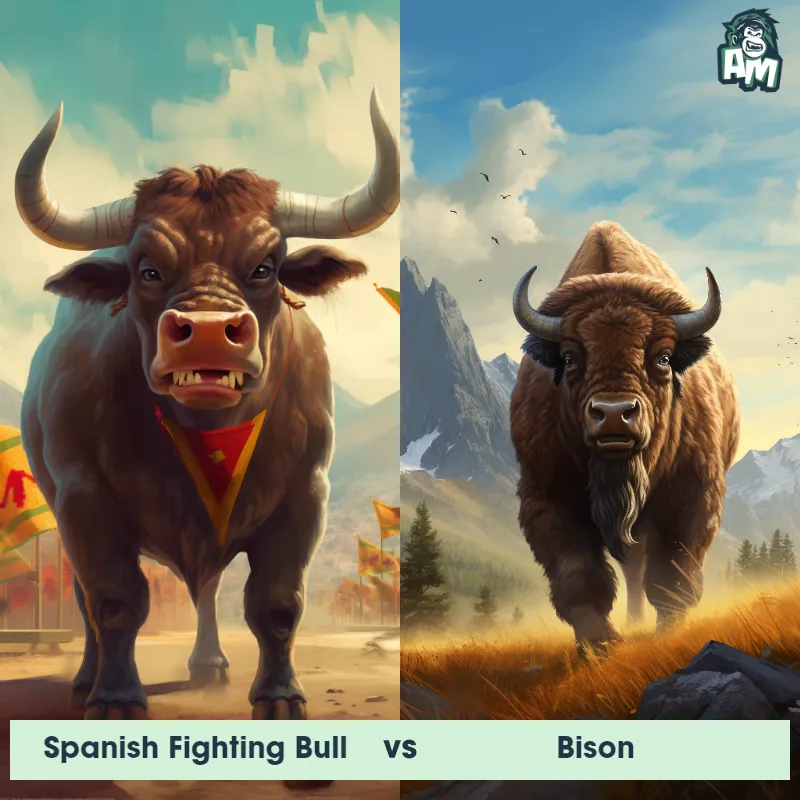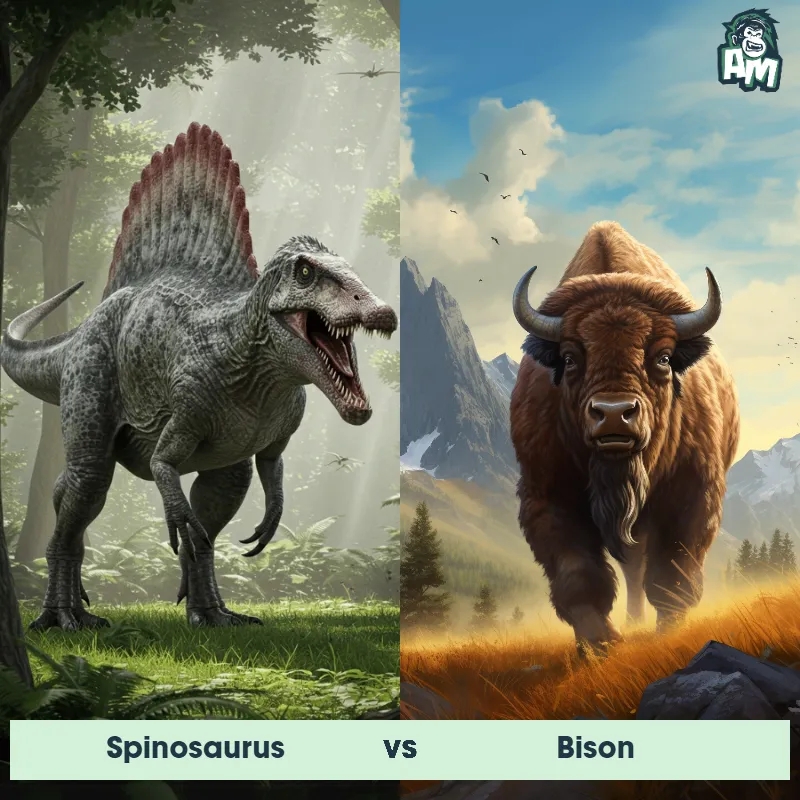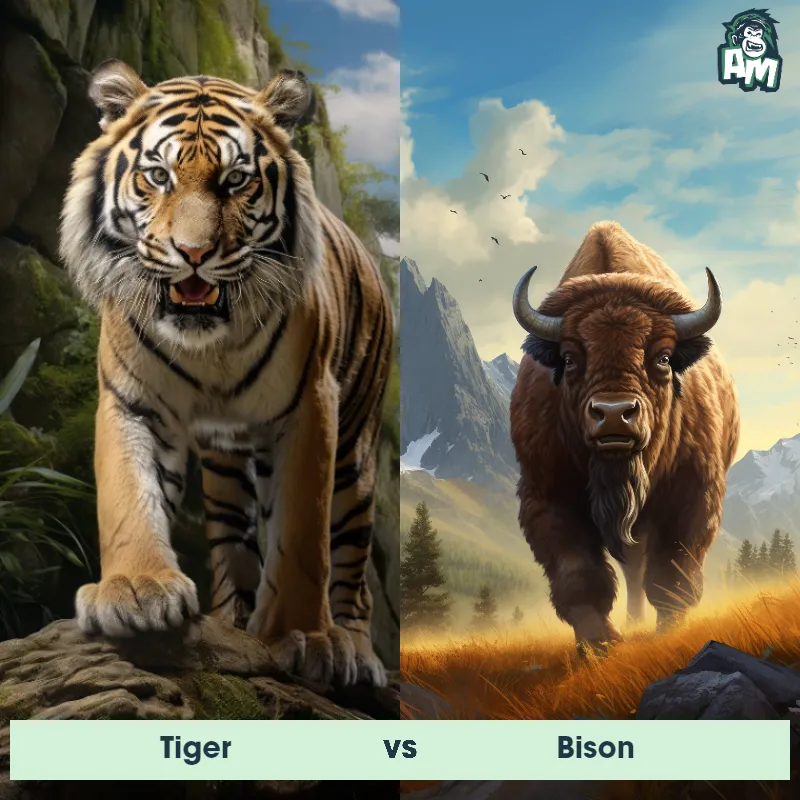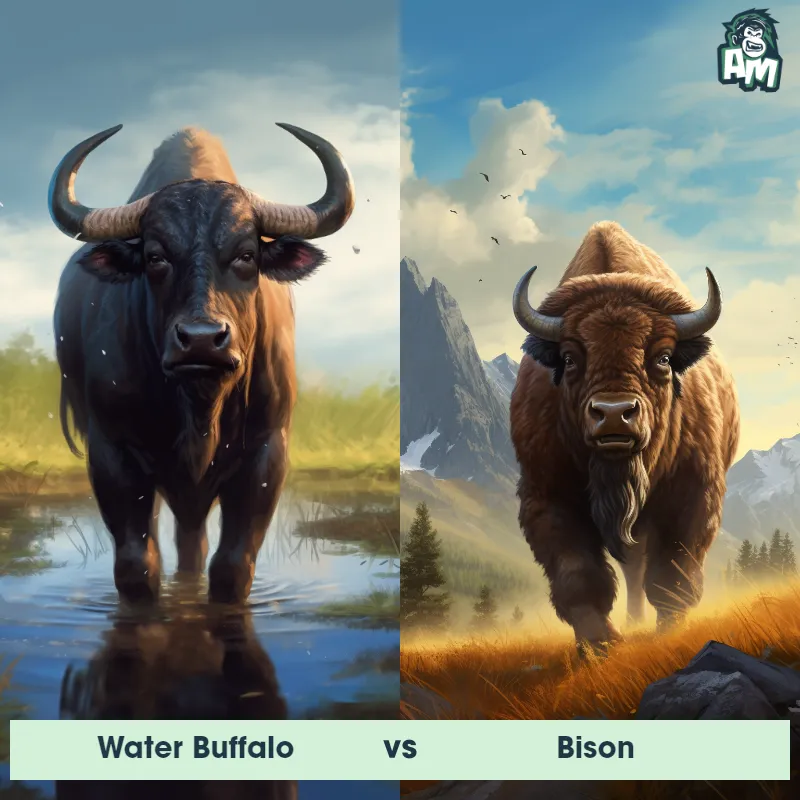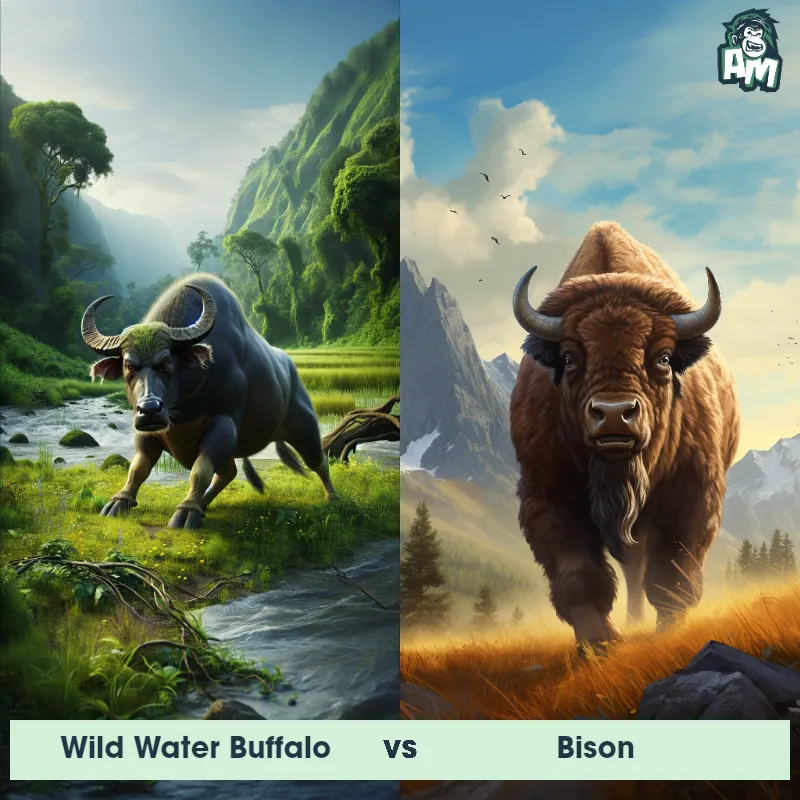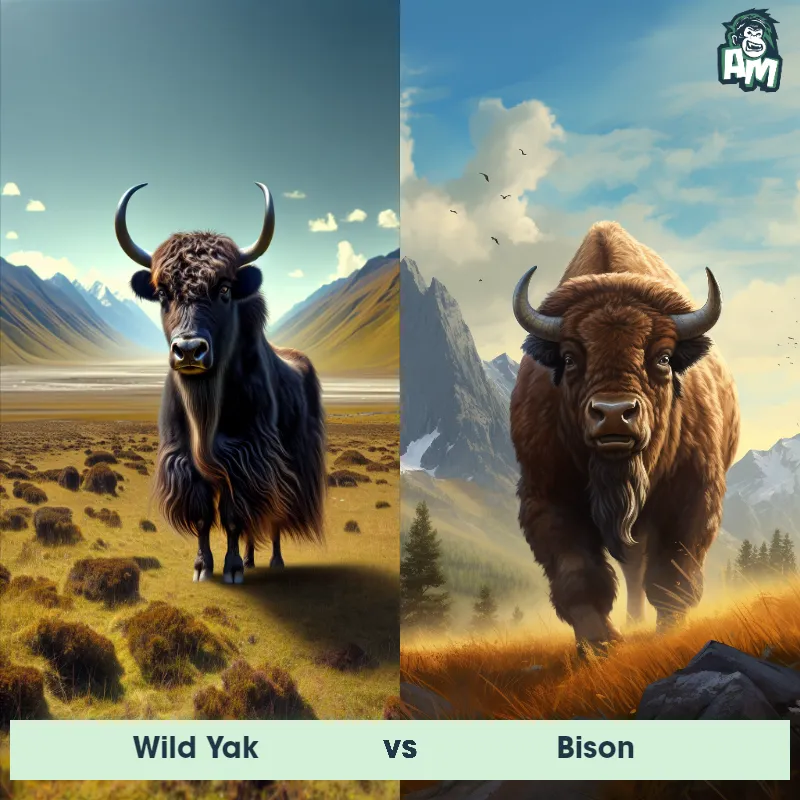The Bison
The Bison, also known as the American bison, is an iconic large mammal native to North America. They are characterized by their massive size, with males weighing up to 2,000 pounds and standing 6 feet tall at the shoulder. Bisons have a distinct hump on their shoulders, a large head with a thick beard and short horns, and a thick, shaggy coat of fur that ranges in color from dark brown to almost black. These herbivores primarily feed on grasses and sedges, and they have adapted to the extreme weather conditions of the plains. Bisons are gregarious animals that live in herds, usually consisting of females and their calves.
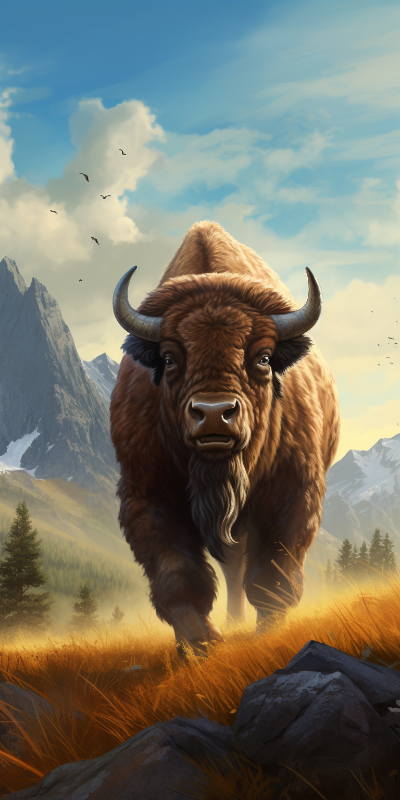
| Bison | |
|---|---|
| Size | 5-6.5 feet tall at the shoulder (1.5-2 meters) |
| Weight | Up to 2,000 pounds (907 kilograms) |
| Speed | 37mph (60km/h) |
| Key Strength | Powerful size, speed, and horns |
| Biggest Weakness | Limited agility due to size |
| Scientific Name | Bison bison |
| Family | Bovidae |
| Habitat | Grasslands, prairies, and forests |
| Geography | North America |
| Diet | Herbivore, primarily grasses and sedges |
| Lifespan | 12 years - 20 years |

The Bison
The Bison, also known as the American bison, is an iconic large mammal native to North America. They are characterized by their massive size, with males weighing up to 2,000 pounds and standing 6 feet tall at the shoulder. Bisons have a distinct hump on their shoulders, a large head with a thick beard and short horns, and a thick, shaggy coat of fur that ranges in color from dark brown to almost black. These herbivores primarily feed on grasses and sedges, and they have adapted to the extreme weather conditions of the plains. Bisons are gregarious animals that live in herds, usually consisting of females and their calves.
Fun Fact: Bisons are incredibly powerful and can run at speeds of up to 35 miles per hour, which is impressive considering their seemingly sluggish appearance.
| Bison | |
|---|---|
| Size | 5-6.5 feet tall at the shoulder (1.5-2 meters) |
| Weight | Up to 2,000 pounds (907 kilograms) |
| Speed | 37mph (60km/h) |
| Key Strength | Powerful size, speed, and horns |
| Biggest Weakness | Limited agility due to size |
| Scientific Name | Bison bison |
| Family | Bovidae |
| Habitat | Grasslands, prairies, and forests |
| Geography | North America |
| Diet | Herbivore, primarily grasses and sedges |
| Lifespan | 12 years - 20 years |
Bison Matchups
We use AI to simulate matchups between the Bison and other animals. Our simulation considers size, strength, and natural predatory behaviors to determine the most likely outcome.
Bison: Diet, Predators, Aggression, and Defensive Behaviors
What do Bison eat?
Bison are herbivores, primarily feeding on grasses, sedges, and other vegetation. They are known to graze for long hours each day to sustain their large bodies. During the winter months when vegetation is scarce, bison may also eat shrubs and tree bark.
Do Bison have any predators?
Bison historically had natural predators such as wolves and Native American hunters. However, in modern times, their main predators are humans. Bison are often hunted for their meat and hides, making human beings their primary threat in terms of predation.
Are Bison aggressive?
Bison are known to exhibit aggressive behavior, especially during the mating season and when defending their herd or territory. They can become particularly dangerous when they feel threatened or provoked. It is essential to maintain a safe distance when observing or interacting with bison in the wild.
Do Bison fight?
Bison are capable of fighting, especially during territorial disputes or when establishing dominance within a herd. Male bison, known as bulls, often engage in physical fights by butting heads and locking horns. These displays of strength are used to establish hierarchy and breeding rights.
How do Bison defend themselves?
When faced with a threat, bison have several defense mechanisms to protect themselves. They can use their large size and horns to intimidate predators or adversaries, often charging at them at high speeds. Bison are also known to form a defensive circle, with the calves in the center, to ward off potential threats.
What is Bison's biggest weakness in a fight?
Despite their formidable size and strength, bison have a vulnerable spot that can be exploited in a fight. Their necks are relatively weak compared to the rest of their bodies, making them susceptible to attacks aimed at this area. Predators or adversaries may target the bison's neck to gain an advantage in a confrontation.
Fun Fact: Despite their massive size, Bisons are excellent swimmers and can cross rivers and streams with ease.
Fun Fact: The hump on a Bison's shoulder is composed of a large mass of muscles that provides support to its head, making it easier to plow through snow and reach buried vegetation during the harsh winter months.



